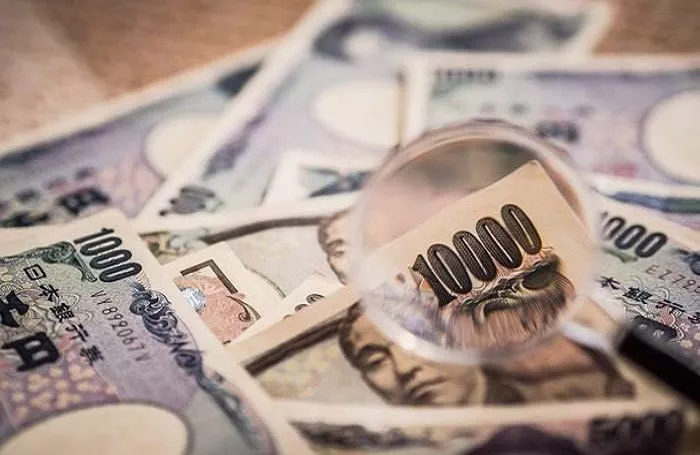The Japanese Yen traded with a downward bias against the US Dollar during the Asian session on Wednesday. This came as market participants grappled with concerns over the potential economic ramifications of US President Donald Trump’s impending reciprocal tariffs. The yen’s decline was also exacerbated by a generally upbeat mood in equity markets, which reduced the safe-haven appeal of the Japanese currency.
Despite the yen’s weakening trend, bearish traders were hesitant to make aggressive bets. They opted to await Trump’s tariff announcement later in the day. The uncertainty surrounding the tariffs’ scope and impact on global trade and specific industries, including those in Japan, made market participants cautious.
The Bank of Japan (BoJ) and the Federal Reserve (Fed) have diverging policy expectations, which played a role in limiting the yen’s losses. In Japan, there are growing signs of broadening inflation. Market sentiment has increasingly accepted that the BoJ will continue to raise interest rates. In contrast, market bets suggest that the Fed will resume its rate – cutting cycle in June. This difference in expectations narrowed the interest rate differential between the two countries, providing some support for the lower – yielding yen and capping the upside of the USD/JPY pair.
Tariff Concerns Weigh on Yen and Japanese Economy
Asian equity markets followed the overnight gains on Wall Street in anticipation of Trump’s tariff announcement. This positive equity market sentiment further undermined the yen, as investors sought riskier assets instead of safe-haven currencies.
Adding to the yen’s woes, Trump’s comments dashed hopes that the tariffs would be targeted at only a select group of countries with large trade imbalances. He stated on Sunday that the so – called reciprocal tariffs would essentially apply to all nations. This announcement raised concerns that the new levies could have a far – reaching impact on Japan’s key industries. As a result, investors scaled back their expectations of a rapid pace of interest rate hikes by the BoJ.
However, recent macroeconomic data in Japan offered some support to the yen. For instance, strong consumer inflation figures from Tokyo, released last Friday, indicated that the door remained open for further BoJ interest rate hikes. This data helped limit the yen’s losses against the dollar.
In the United States, the Federal Reserve faced a challenging situation. Rising prices and slowing business activity suggested that the economy might be heading towards stagflation. Data showing that the manufacturing sector contracted for the first time in three months and factory – gate inflation jumped to a near – three – year high added to these concerns. The ISM Manufacturing Purchasing Managers Index (PMI) fell from 50.3 in February to 49, and the Employment Index signaled a faster decline in the sector’s payrolls. Additionally, the Job Openings and Labor Turnover Survey (JOLTS) revealed that the number of job openings in February decreased from January. Markets were pricing in a potential 80 – basis – point reduction in US borrowing costs by the end of the year, which failed to attract significant buyers for the US dollar.
Traders were closely watching Wednesday’s US economic data releases, including the ADP report on private – sector employment and Factory Orders, for clues about the economy’s health ahead of Trump’s tariff announcement.
Technical Outlook for USD/JPY
From a technical analysis perspective, the USD/JPY pair had been trading below the 100 – period Simple Moving Average (SMA) since the start of the week. Although an upward move could potentially benefit bullish traders, neutral oscillators indicated that caution was warranted. The recent breakdown below a multi – week ascending channel suggested that traders should wait for strong follow – through buying before expecting significant gains.
On the upside, the weekly high around 150.25 served as an immediate resistance level. If the pair could sustain strength above this level, it might climb beyond the 150.75 – 150.80 hurdle and towards the 151.00 mark. Further resistance levels included the March monthly swing high around 151.30, the technically significant 200 – day SMA near 151.60. Breaking above these levels could see the spot prices reclaim the 152.00 mark and potentially rise further to the 152.45 – 152.50 region, en route to the 100 – day SMA around the 153.00 round figure.
On the downside, the 100 – period SMA on the 4 – hour chart, currently around 149.30 – 149.25, along with the 149.00 mark and the 148.70 region (the weekly swing low), provided support for the USD/JPY pair. A decisive break below these levels would be seen as a fresh signal for bearish traders, potentially causing spot prices to resume the downtrend observed over the past three months.
Related Topics:
Japanese Yen’s Struggles Persist Amid PMI Woes and Policy Divergence
Japanese Yen Retreats Amid Positive Market Sentiment and Divergent Policy Expectations
Japanese Yen Weakens as CPI Data and Fed Outlook Impact USD/JPY


